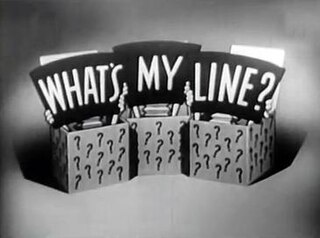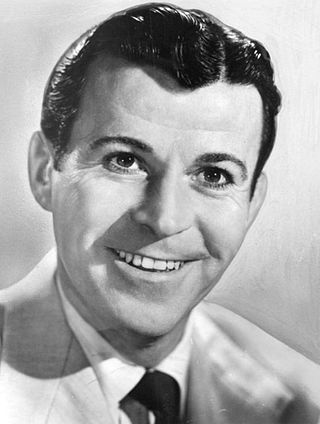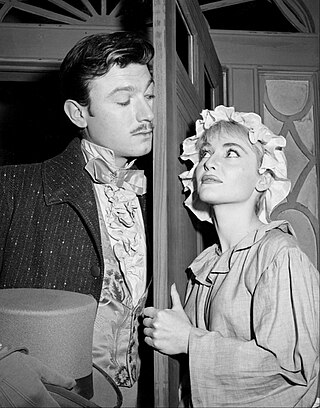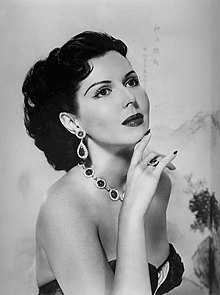
Clara Ann Fowler, better known by her stage name Patti Page, was an American singer. Primarily known for pop and country music, she was the top-charting female vocalist and best-selling female artist of the 1950s, selling over 100 million records during a six-decade-long career. She was often introduced as "the Singin' Rage, Miss Patti Page". New York WNEW disc-jockey William B. Williams introduced her as "A Page in my life called Patti".

What's My Line? is a panel game show that originally ran in the United States, between 1950 and 1967, on CBS. The game show started in black and white and later in color, with subsequent U.S. revivals. The game uses celebrity panelists to question contestants in order to determine their occupation. The majority of the contestants were from the general public, but there was one weekly celebrity "mystery guest" for which the panelists were blindfolded. It is on the list of longest-running U.S. primetime network television game-shows. Originally moderated by John Charles Daly and most frequently with regular panelists Dorothy Kilgallen, Arlene Francis, and Bennett Cerf, What's My Line? won three Emmy Awards for "Best Quiz or Audience Participation Show" in 1952, 1953, and 1958 and the Golden Globe Awards for Best TV Show in 1962.

The Arthur Murray Party is an American television variety show that ran from July 1950 until September 1960. The show was hosted by dancers Arthur and Kathryn Murray, the show featured various acts and celebrity guests and acted as advertisement for their chain of dance studios. Each week, the couple performed a mystery dance, and the viewer who correctly identified the dance would receive two free lessons at a local studio.

Playhouse 90 is an American television anthology drama series that aired on CBS from 1956 to 1960 for a total of 133 episodes. The show was produced at CBS Television City in Los Angeles, California. Since live anthology drama series of the mid-1950s usually were hour-long shows, the title highlighted the network's intention to present something unusual: a weekly series of hour-and-a-half-long dramas rather than 60-minute plays.

Dennis Day was an American actor, comedian and singer. He was of Irish descent.

"In My Merry Oldsmobile" is a popular song from 1905, with music by Gus Edwards and lyrics by Vincent P. Bryan.

The Jimmy Dean Show is the name of several similar music and variety series on American local and network television between 1963 and 1975. Each starred country music singer Jimmy Dean as host.

Les Crane was a radio announcer and television talk show host, a pioneer in interactive broadcasting who also scored a spoken word hit with his 1971 recording of the poem Desiderata, winning a "Best Spoken Word" Grammy. He was the first network television personality to compete with Johnny Carson after Carson became a fixture of late-night television.

Florence Agnes Henderson was an American actress. With a career spanning six decades, she is best known for her starring role as Carol Brady on the ABC sitcom The Brady Bunch. Henderson also appeared in film, as well as on stage, and hosted several long-running cooking and variety shows over the years. She appeared as a guest on many scripted and unscripted television programs and as a panelist on numerous game shows. She was a contestant on Dancing with the Stars in 2010.

The Alcoa Hour is an American anthology television series that was aired live on NBC from October 16, 1955, to September 22, 1957.
Town Hall Party was an American country music program, firstly broadcast on radio and then television

Lost television broadcasts are mostly those early television programs which cannot be accounted for in studio archives usually because of deliberate destruction or neglect.

Tonight Starring Steve Allen is an American talk show hosted by Steve Allen. It was the first version of what eventually became known as The Tonight Show. Tonight was the first late-night talk show, as well as the first late night television series of any kind to achieve long-term success. Allen's run as host of the show lasted for two and a half seasons, beginning in fall 1954 and ending with Allen's departure in January 1957.
Take That was one of the earliest Australian television series. It debuted in late 1957 and ran till March 1959. As was often the case with early Australian television, it aired only on a single station, in this case HSV-7, in Melbourne.
Faye Emerson's Wonderful Town, also known as Wonderful Town, USA, is a half-hour variety television series that aired on CBS from June 16, 1951, to April 19, 1952, in which Faye Emerson visits various cities. Episodes of the program were also shown to American military personnel overseas via Kinescope.

Bride and Groom is a 1951-1958 American daytime television series. It was originally broadcast on CBS from January 25, 1951 to October 9, 1953, and then moved to NBC for a run from December 1, 1953 to August 27, 1954. After a pause, the show returned on NBC from July 1, 1957 to January 10, 1958. It could be considered an early reality series. The series presented marriages live on the air, but these couples were not put together for the purpose of the program. Couples who were intending to get married could apply to be married on the show. The CBS episodes aired in a 15-minute time-slot, with two commercial breaks.
The Patti Page Show is an American television series which aired from 1955 to 1956. It aired in a 15-minute time-slot, with two commercial breaks for sponsor Oldsmobile. In the series, Patti Page lip-synced pop songs, mostly standards, with additional songs by the Page Five singers, a vocal group of three men and two women. The series aired in first-run syndication. It was produced by Screen Gems. There were 78 quarter-hour episodes, which around 1958 were edited into 31 half-hour episodes.

Dick Powell's Zane Grey Theatre is an American Western anthology television series broadcast on CBS from October 5, 1956 until May 18, 1961.
Oldsmobile Music Theatre is an American musical anthology television series that was broadcast on NBC from March 26, 1959, until May 7, 1959.














